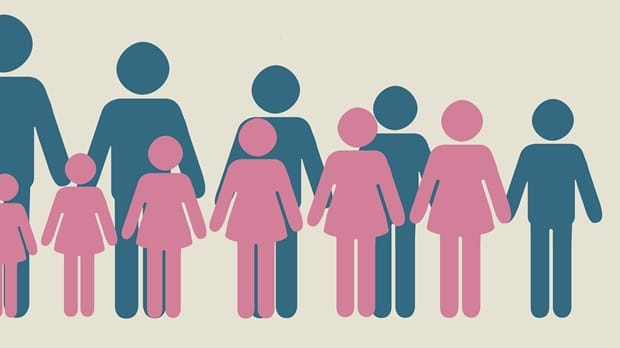
Where are the men? Since last fall, when Harvey Weinstein and his predator brothers were exposed for enacting poisonous masculinity, I’ve heard that question a lot. More and more women are speaking out—and, thankfully, being believed. Two simple words—“Me, too”—have sparked a movement that’s awoken a lot of people.
This is essential. But almost entirely absent from the global conversation is an examination of the system that allowed men like Weinstein to thrive—a system that is “male-dominated, male-identified, and male-centered,” as the late sociologist Allan Johnson put it.
The mainstream media’s coverage of individual stories of fallen men is a cop-out. If they want to get to the root of the problem they have to examine why men feel entitled to abuse women. And that leads us to—like the word or not—patriarchy. Women and men need to jointly put patriarchy on trial. If we don’t, #MeToo’s potential tipping point might tip backwards.
Where are the men? As the principal survivors of men’s sexual harassment and assaults,women are leading the way as a tsunami of change rolls over a culture that unfairly privileges men. But they aren’t alone. As entitled men in entertainment, politics, the media, and the arts are outed, suspended, or fired, we’re being asked, Where are the men? It’s a legitimate question. Women created and still lead the movement but it’s our cause too. Some men have been allies for a long time.
For two generations a growing number of men of all races and ethnicities in the US and around the world have been working to prevent domestic and sexual violence, and also to redefine and transform traditional ideas about manhood, fatherhood, and brotherhood. Voice Male, the magazine I edit, has been chronicling those efforts for three decades.
Astonishingly, in reporting on #MeToo most of the media has neglected to cover—or even acknowledge—pro-feminist men’s sweeping critique of manhood and masculinity going back to the 1970s. When Gloria Steinem famously said, “Women want a men’s movement. We are literally dying for it.” some men were listening.
Some first pro-feminist organizations started long ago, including Men Allied Nationally for the Equal Rights Amendment (M.A.N. for ERA, 1976), EMERGE, the first batterer intervention program (1977), RAVEN (Rape and Violence End Now, 1978), and Oakland Men’s Project (1979). But today, since #MeToo represents such a pivotal moment for men to challenge the notion we were socialized to believe—that male-dominated, male-identified, male-centered societies are normal—and because we have such an opportunity to educate ourselves about the history and ongoing activism of the anti-sexist men’s movement, the question is what can men do right now.
Borrowing from MVP Strategies’ “Ten Things Men Can Do to Prevent Gender Violence“, here is an abbreviated list of suggestions.
Approach sexual harassment and gender violence as a men’s issue. View men not only as perpetrators or possible offenders, but as empowered bystanders who can confront abusive peers.
Don’t remain silent. If someone is abusing or being disrespectful to his female partner or anyone—don’t look the other way. Talk to him; urge him to seek help.
Have the courage to look inward. Question your own attitudes. Don’t be defensive when you’ve done something that hurts someone. Understand how your attitudes and actions might inadvertently perpetuate sexism and violence. Work to change them.
Get help. If you are emotionally, psychologically, physically, or sexually abusive to women, or have been in the past, seek professional help. Now.
Join the cause. Be an ally to women who are working to end gender violence. Support the women whose courage and empowered voices have catalyzed the #MeToo movement.
Be an ally. Recognize and speak out against homophobia and gay-bashing— abuse with direct links to sexism (e.g. the gender identity and sexual orientation of men who challenge sexism is often questioned, a strategy intended to silence them. This is a key reason few men speak out).
Educate yourself. Attend programs, watch films, and read articles and books about multicultural masculinities, gender inequality, and the root causes of gender violence.
While women will continue to lead the #MeToo movement, men must play a critical role as partners and allies. If men are willing to investigate the destructive nature of patriarchy, and educate themselves about the benefits of gender equality, then history may well record this perilous time as patriarchy’s last stand and feminism’s next chapter. #MenWhatAreWeWaitingFor?
 Rob Okun, editor of Voice Male magazine and the anthology, VOICE MALE - The Untold Story of the Profeminist Men's Movement?, is also one of Women's eNews ‘21 Leaders for the 21st Century‘ 2018. To attend, RSVP here.
Rob Okun, editor of Voice Male magazine and the anthology, VOICE MALE - The Untold Story of the Profeminist Men's Movement?, is also one of Women's eNews ‘21 Leaders for the 21st Century‘ 2018. To attend, RSVP here.

